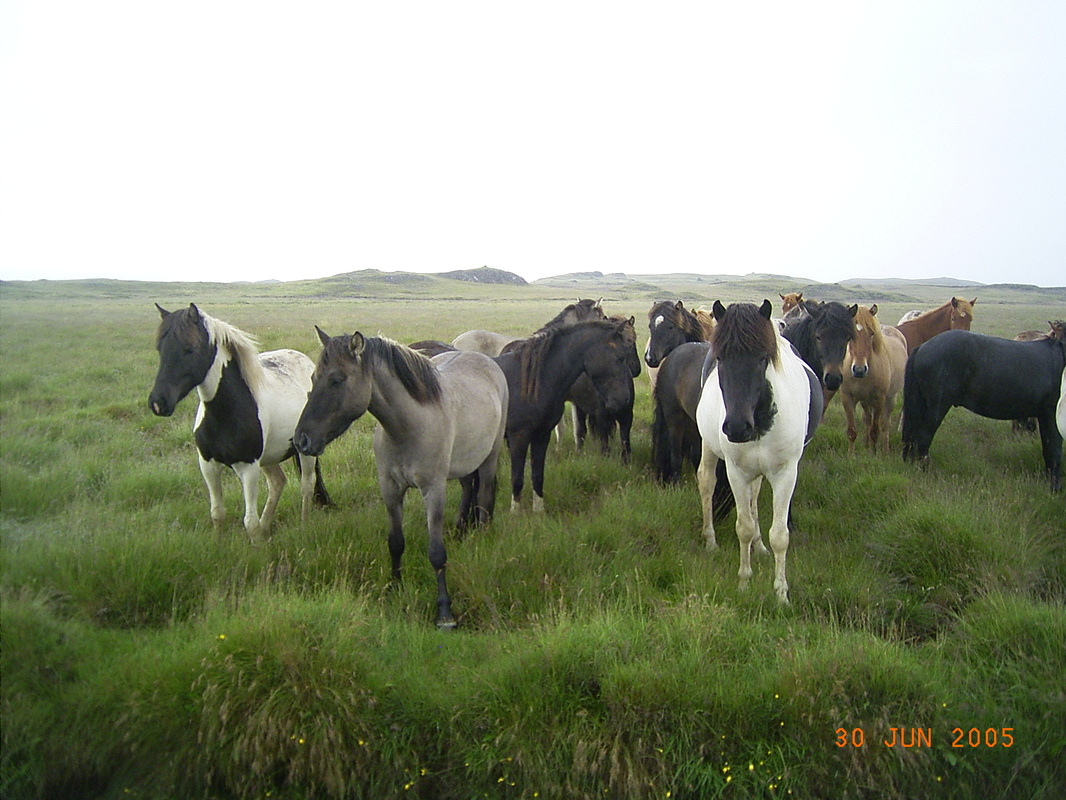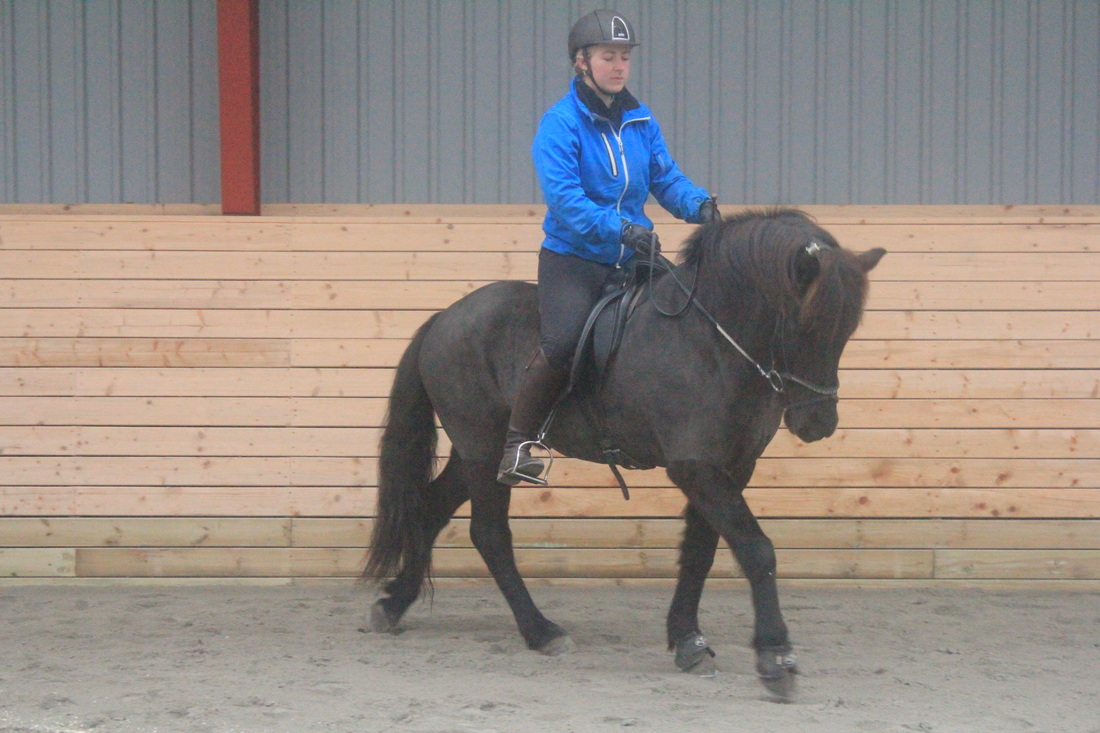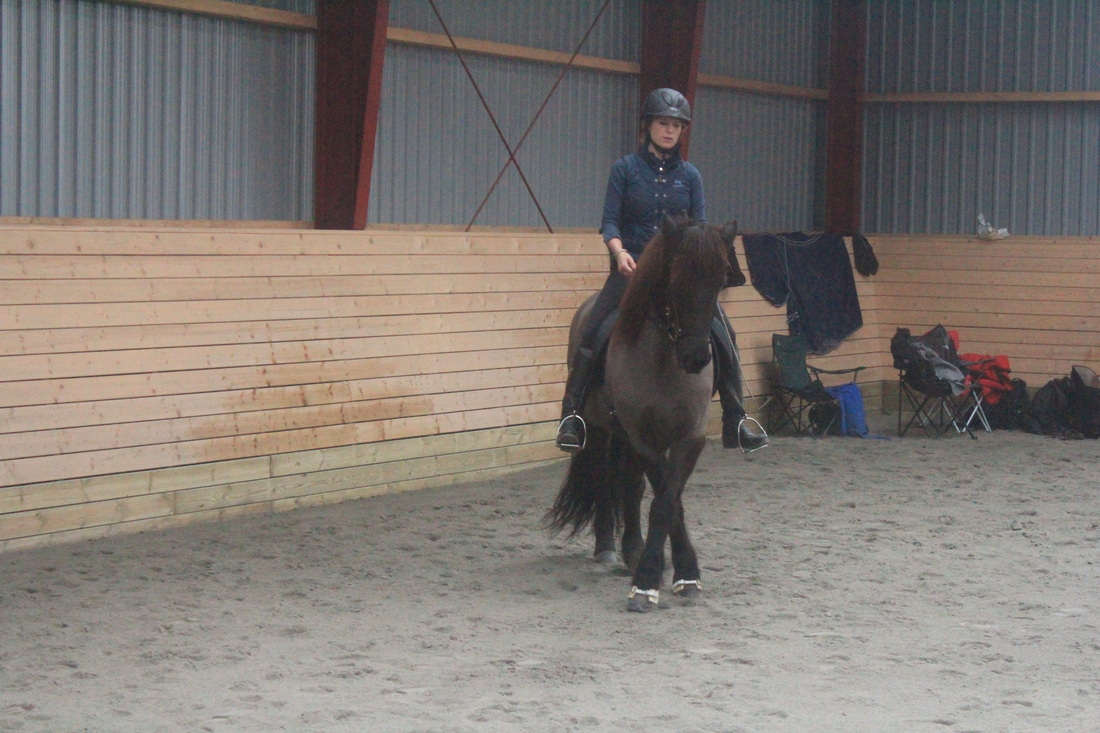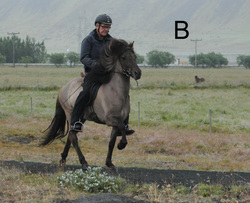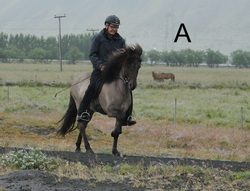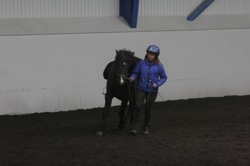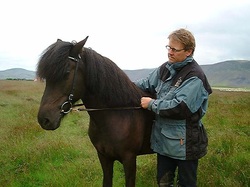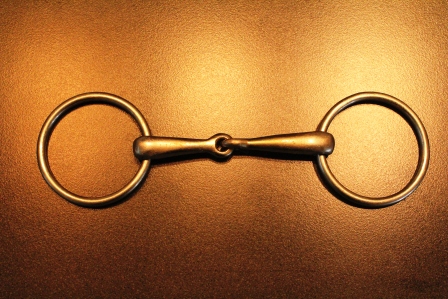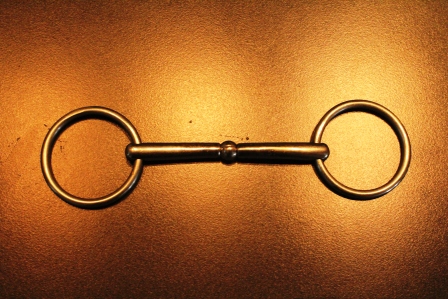|
|
The autumn - what to do?!
Many people feel like everything is over when the autumn comes, the competition season is finished and in Iceland the travelling on horseback is behind us. In the old days and actually, not very long ago all riding horses in Iceland had holidays from the beginning of September until Christmas. People took the shoes off and put the horses together into large fields where there was plenty of grass so that they could get fat, supplies for the winter and there they would leave them until December, when a new riding season would start. You can always find a discussion about wherever the horses should have holidays or not, especially the competition horses. In my opinion a short holiday is a positive thing, but not to get the horse totally out of shape. I am talking about a break of two or three weeks. A longer holiday can simply be lighter training, for example to train this horse only as a hand horse. The autumn is the right time to reflect the last season, to think about the success we had and the “problems” or better to say what could have been better. Try to find out the routes of a problem or something that was difficult; than take a look at the classical training stages and find out how far back you have to go to make things easier. The autumn is the perfect time for gymnastic work as well as education work. Work with your communication with the horse and that will improve your riding as well. Make sure your horses reactions to the age you give it each time wherever it is inside age, outside age or rein contact are in good shape and if not, polish these buttons. The German language has many nice words that express both feelings and technic in riding, one of these words is “Durchlässigkeit”, the Swedish horse people sometimes use the word “gennomsleppighet” (excuse the spelling Swedish readers). In Icelandic we have a nice word with the same meaning “gegnumflæði”. The meaning of this word is that the age you give to the horse go through it and are reacted on without hesitation and extra tension, meaning there are no side effects, only the correct reaction. This we will reach trough a lot of training and education and I would say that a horse that fulfills this idea is well educated and trained. If there is an English word for this phenomenon that I don’t know about (with this meaning) and somebody out there knows about this, please let me know. If there isn’t but somebody has an idea, please also let me know. |
Improve your horse’s endurance
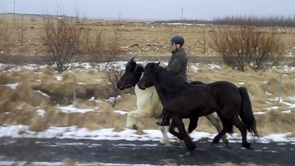
22.10.12
I do not know any other way that I think is better to improve your horse’s endurance and stamina then handhorseriding. It is a way that gives you the opportunity to give the horse more training without putting to much strain on its legs. It is also a good psychological training. It gives the horse a good psychological balance.
You take two horses for a ride in the nature and you are riding in medium tempo Tölt and Trot and in-between in Walk. You exchange horses 2-3 times during your ride. Good luck
I do not know any other way that I think is better to improve your horse’s endurance and stamina then handhorseriding. It is a way that gives you the opportunity to give the horse more training without putting to much strain on its legs. It is also a good psychological training. It gives the horse a good psychological balance.
You take two horses for a ride in the nature and you are riding in medium tempo Tölt and Trot and in-between in Walk. You exchange horses 2-3 times during your ride. Good luck
An uneven horse
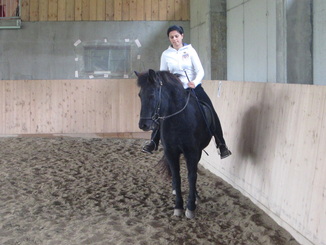
12.10.12
If your horse is uneven, that is stiffer to one side then the other, for example to the left side, prefers to run on one side of the road rather than the other, that would be the left side of the road, it is likely that this horse prefers to run left canter if he can choose side, and probably it is more difficult when posting the trot to rise up out of the saddle when the left hindleg is activ and pushing on the ground.
Therapy/Training
In my opinion this horse has a weaker left hind-leg and the training should be so, that it makes that leg stronger. Shoulder in to the the right brings the left hind-leg deeper in under the horses weight and could therefore help. This exercise also makes the neck softer to bend to the left.
In Right Canter, the left hind-leg is under more pressure then the right one. That is also a good way to train this horse.
Posting in Trot, that is using a rising-sitting seat on the left hind-leg could also be helpful. This will be difficult in the beginning, but it comes easier when that left leg grows strength.
Remember that all that is written here under „Tips“ is just my opinion, and may be wrong.
Good luck
If your horse is uneven, that is stiffer to one side then the other, for example to the left side, prefers to run on one side of the road rather than the other, that would be the left side of the road, it is likely that this horse prefers to run left canter if he can choose side, and probably it is more difficult when posting the trot to rise up out of the saddle when the left hindleg is activ and pushing on the ground.
Therapy/Training
In my opinion this horse has a weaker left hind-leg and the training should be so, that it makes that leg stronger. Shoulder in to the the right brings the left hind-leg deeper in under the horses weight and could therefore help. This exercise also makes the neck softer to bend to the left.
In Right Canter, the left hind-leg is under more pressure then the right one. That is also a good way to train this horse.
Posting in Trot, that is using a rising-sitting seat on the left hind-leg could also be helpful. This will be difficult in the beginning, but it comes easier when that left leg grows strength.
Remember that all that is written here under „Tips“ is just my opinion, and may be wrong.
Good luck
A new training season
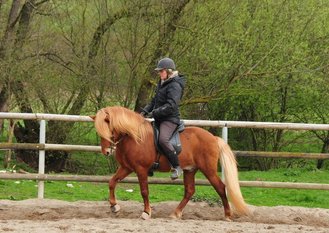
10.10.12
Now riders are starting a new training season. If the horse has had a short or longer holiday the rider must in my opinion start slowly and step by step increasing the training. If training starts to rapidly, it may cause stiffness in muscles and also the horse might start to shielding itself, by not putting as much effort in to what it is doing and how it moves.
You can train your horse for ½ an hour up to one hour if you take care in keeping the training light. Groundwork, longeing, riding walk on the rein for short periods and then letting the horse stretch out in between and riding some exercises in walk, taking care of the smoothness in communications. Short periods in other gates, Tölt or Trot. These are just exambles, but there are no rules, just keep in mind that the horse is not in full training.
Now riders are starting a new training season. If the horse has had a short or longer holiday the rider must in my opinion start slowly and step by step increasing the training. If training starts to rapidly, it may cause stiffness in muscles and also the horse might start to shielding itself, by not putting as much effort in to what it is doing and how it moves.
You can train your horse for ½ an hour up to one hour if you take care in keeping the training light. Groundwork, longeing, riding walk on the rein for short periods and then letting the horse stretch out in between and riding some exercises in walk, taking care of the smoothness in communications. Short periods in other gates, Tölt or Trot. These are just exambles, but there are no rules, just keep in mind that the horse is not in full training.
A fitting bit
Whatever kind of bit we are using for our horse, it is so important to use one that fits it´s mouth. In my opinion most Icelandic horses should have bit that is in the length 10, 5 – 11 cm long.
Keeping in mind that that space for a bit in the horse’s mouth, I like simple bits and not very thick. Every rider should have some and different bits, made from different materials so they can give the horse now and then something different. It gives the horse more attention to the mouth and communications through the rein contact. |
My favorits in the momentA single broken 10,5 cm bit, rather fine, with little taste. This bit is always in use in my stable.
A single broken 11 cm long bit that I find interesting to use as a surprise for some horses.
|
